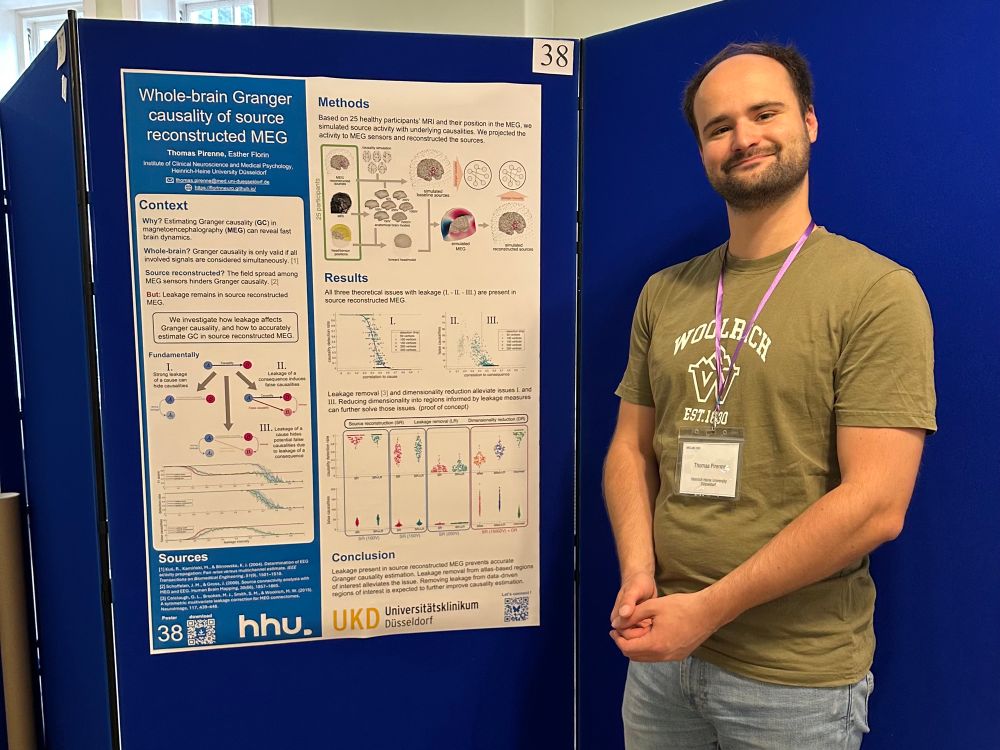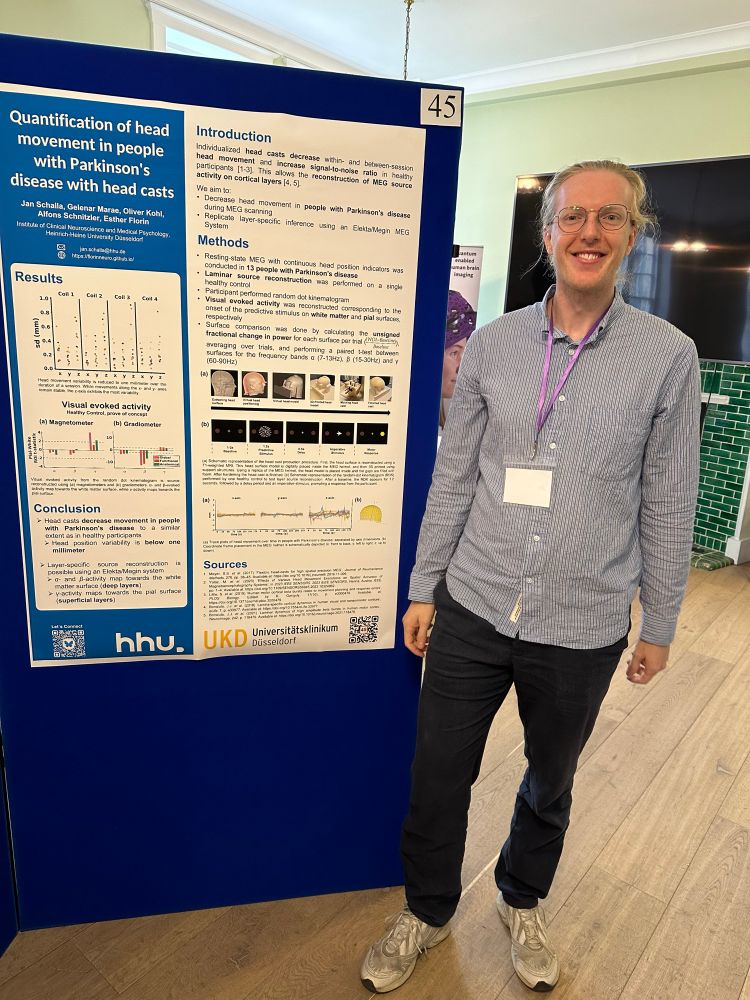
Die Karikatur zeigt eine Person, die auf dem Sofa sitzt und in ihr Handy spricht: „ChatGPT stimmt es, dass es auf der Welt Menschen gibt, die oft keinen Strom oder Wasser haben, nur damit ich dich jeden Quatsch fragen kann?“
Guten Morgen!
28.10.2025 06:00 — 👍 224 🔁 61 💬 2 📌 3
Genial gut! #Danke
22.10.2025 19:06 — 👍 6 🔁 3 💬 0 📌 0
"Achtet auf die Sprache. Denn die Sprache ist (sozusagen) die Vorform des Handelns."
Angela Merkel
#Merzvölligungeeignet
#MerzRücktritt
#kleinePaschas
#Sozialtourismus
#kompletteHeilfürsorge
#lassensichdieZähnemachen
#Stadtbild
#Töchter
21.10.2025 18:13 — 👍 339 🔁 130 💬 6 📌 3

The title reads 'Pumpkin Dos & Don’ts'. A light-hearted illustrated poster split into two columns with a "Do" section on the left and a "Don't" section on the right. In the "Do" section: three green checkmarks highlight turning pumpkins into bird feeders, keeping them high to avoid foraging Hedgehogs, and composting leftovers to avoid harming wildlife. The "Don't" section features three red crosses, advising against leaving pumpkins on the ground (Hedgehogs might eat them), letting pumpkins rot (it harms wildlife), and wasting pumpkins …encouraging instead to make tasty recipes or bird treats. A cartoon Hedgehog and pumpkin smile from the bottom of the poster, adding a fun and informative feel.
Psst! Pumpkins are a treat for birds but can be harmful to hedgehogs. 🦔❌
Keep them high up out of reach and compost any leftovers to protect our garden wildlife.
21.10.2025 09:40 — 👍 124 🔁 78 💬 2 📌 4

Stadtbild-Aussage: Söder und Merz kritisieren Proteste
Debatte um "Stadtbild"-Äußerung: CDU-Chef Merz kritisiert Demonstrationen gegen ihn und CSU-Chef Söder spricht von einer "linken Kampagne".
Wenn Söder von "linker Kampagne" spricht, versucht er das eigene Klientel zur Ordnung zu rufen um sich bedingungslos hinter den rassistischen Äußerungen zu stellen, so hat der Sozialflügel der Union auch schon kurz aufgemuckt.
Wenn Antirassmus links ist, wissen wir ja jetzt alle wo sie stehen.
21.10.2025 05:02 — 👍 660 🔁 182 💬 41 📌 14

Dass wir im heutigen Stadtbild so viele Stolpersteine haben, liegt übrigens daran, dass sich mal eine Regierung an bestimmten Menschen im deutschen Stadtbild störte.
18.10.2025 05:38 — 👍 3398 🔁 1188 💬 40 📌 29
it's wild that R, the ubiquitous statistical computing language, was co-created by a Māori prof (Ross Ihaka) — and yet the vast majority of scientists who use R don't know
this is like inventing the toaster. possibly the largest impact of a single member of an indigenous community on modern science
14.12.2023 10:35 — 👍 1420 🔁 562 💬 43 📌 36

Kohl et al. report that sensorimotor network dynamics can distinguish patients with Parkinson’s disease from controls and highlight the importance of network context of motor cortical activations.
buff.ly/489DYfB
#Parkinsons
19.09.2025 15:00 — 👍 8 🔁 5 💬 0 📌 0

Changes in sensorimotor network dynamics in resting-state recordings in Parkinson’s disease
Kohl et al. report that sensorimotor network dynamics extracted from magnetoencephalogram recordings can distinguish patients with Parkinson’s disease from
Hurrah!
New paper out doi.org/10.1093/brai...!
We show that sensorimotor network dynamics are altered in Parkinson’s disease and highlight the importance of looking at motor cortical activity within the broader brain network context to better understand pathophysiological changes underlying PD.
28.08.2025 15:04 — 👍 9 🔁 5 💬 0 📌 0
Really glad that my first paper is now out in @painthejournal.bsky.social 😁🧠!
21.07.2025 14:59 — 👍 9 🔁 4 💬 0 📌 0

I’m sure you’ve always wondered how reliable Granger causality of source reconstructed MEG really is. Better yet, you surely wonder how to improve it. You’re in luck, I’ve just arrived at @meguki2025.bsky.social to discuss it. All jokes aside, meet me at poster 38 if you’re interested. 👋🏼🧠
17.07.2025 08:41 — 👍 12 🔁 7 💬 0 📌 0

Poster 45 of MEGUKI 2025 from Jan Schalla.
Just arrived at @meguki2025.bsky.social excited to present results on head movement reduction in people with Parkinson‘s using individual head casts. Additionally we can replicate prior findings on laminar source reconstruction! If you want to find out more, do not hesitate to find me at poster 45!
17.07.2025 08:35 — 👍 8 🔁 5 💬 0 📌 1

Overview of the simulation strategy and analysis. a) Pial and white matter boundaries
surfaces are extracted from anatomical MRI volumes. b) Intermediate equidistant surfaces are
generated between the pial and white matter surfaces (labeled as superficial (S) and deep (D)
respectively). c) Surfaces are downsampled together, maintaining vertex correspondence across
layers. Dipole orientations are constrained using vectors linking corresponding vertices (link vectors).
d) The thickness of cortical laminae varies across the cortical depth (70–72), which is evenly sampled
by the equidistant source surface layers. e) Each colored line represents the model evidence (relative
to the worst model, ΔF) over source layer models, for a signal simulated at a particular layer (the
simulated layer is indicated by the line color). The source layer model with the maximal ΔF is
indicated by “˄”. f) Result matrix summarizing ΔF across simulated source locations, with peak
relative model evidence marked with “˄”. g) Error is calculated from the result matrix as the absolute
distance in mm or layers from the simulated source (*) to the peak ΔF (˄). h) Bias is calculated as the
relative position of a peak ΔF(˄) to a simulated source (*) in layers or mm.
🚨🚨🚨PREPRINT ALERT🚨🚨🚨
Neural dynamics across cortical layers are key to brain computations - but non-invasively, we’ve been limited to rough "deep vs. superficial" distinctions. What if we told you that it is possible to achieve full (TRUE!) laminar (I, II, III, IV, V, VI) precision with MEG!
02.06.2025 11:54 — 👍 112 🔁 45 💬 4 📌 8

New paper in Imaging Neuroscience by Vaishali Balaji, Alfons Schnitzler, and Joachim Lange:
Modulating somatosensory alpha oscillations using short-period transcranial alternating current stimulation
doi.org/10.1162/imag...
11.04.2025 07:59 — 👍 7 🔁 2 💬 0 📌 2
Journalistin und GF
@rechtegewalt.bsky.social
interested in: bröckelnde Brandmauern, Rechtsterrorismus, NSU und Rechtsstaat.
Verband der Beratungsstellen für Betroffene rechter, rassistischer und antisemitischer Gewalt e.V. www.verband-brg.de
🐾 Ermöglicht von über 25.000 Genoss*innen und http://taz.de/fuer-alle. Macht mit!
tazler*innen Starter Pack: https://go.bsky.app/KSgzo17
💌 Feedback an die Redaktion: briefe@taz.de, Social Team: kommune@taz.de | taz.de/impressum
Author, essayist, public speaker. Co-founder and co-host of the Stadio football podcast. musaokwonga.com
.:Für alle Lautsprecherdurchsagen, die zu schön sind, um vergessen zu werden:. 🚅🚌✈🚃🚢🚠 | Instagram, Facebook, Mastodon, Threads, X: @BahnAnsagen | von: @kollege
https://linktr.ee/bahnansagen
Factchecking book author about energy, mobility and food transition, loves🌱, 🚲, 🚄, sometimes too giggly 🤪
📗 Buch: https://graslutscher.de/klima-bullshit-bingo/
📟 Blog: https://graslutscher.de/
Literaturwissenschaftlerin @unistuttgart.bsky.social, Hg. @exprzeitschrift.bsky.social, Mitinitiatorin von #IchBinHanna (Feed: https://lmy.de/ZZNrEURR), https://www.becher-podcast.de/ #Wiederanders.
🌱 Klima- & Biodiversitätskrise lösen
🇪🇺 Europäische Politik
🟢 Goodforces
Aktionsnetzwerk | Multiaccount | Wir sind entschlossen Naziaufmärsche zu verhindern.
Psychologisierung und Stigmatisierung von
ME/CFS und PAIS, Psychosomatikkritik
@ UniLeipzig
sie/ihr, they/them
Die Berufsvereinigung grüner und grünennaher Polizist*innen. Wir treten ein für eine bürgernahe Polizeiarbeit.
Es postet das Social Media Team von @polizeigruen im Auftrag des Vorstands.
A podcast about how conservatives see sex and gender, and how they keep fucking things up for the rest of us. Hosted by Adrian Daub and Moira Donegan.
Neurology south London trainee 🧠 (OOP-R; ST6) ⋅ Clinical Research Fellow & PhD candidate based at UCL Queen Square Institute of Neurology — #HD-YAS https://orcid.org/0000-0002-0679-0117
Als Gyn grundsätzlich auf der Seite der Frauen & Kinder! OB/GYN, Multikulturell #MedSky #Science #WomenInMedicine #TeamWissenschaft 💉🌍 #Vaccines #sichereBildung, #CovidIsNotOver #MaskUp #Antifa #fcknzs #fckafd #StadtbildStörende Copyright 📷 📄
Neuroscientist, in theory. Studying sleep and navigation in 🧠s and 💻s.
Assistant Professor at Yale Neuroscience, Wu Tsai Institute.
An emergent property of a few billion neurons, their interactions with each other and the world over ~1 century.
Cartoonist and Illustrator. My book of science cartoons, PHYSICS FOR CATS, is available now! www.tomgauld.com
Technical Writer, Cultural Anthropologist, Blogger, Cyclist / „A thoughtful activist navigating the online chaos with both insight and humor“ / „F*ck all those perfect people“ / https://readit-DTP.de
Professors are the enemy... of this bullshit.
🧠〰️〰️〰️〰️〰️〰️〰️〰️〰️〰️〰️〰️〰️〰️〰️〰️
Neuroelectromagneticoscillationsexpialidocious!
🧠〰️〰️〰️〰️〰️〰️〰️〰️〰️〰️〰️〰️〰️〰️〰️〰️
Professor, Center of Functionally Integrative Neuroscience, Aarhus University
Facilitating global collaboration in the computational sciences.
neuromatch.io










